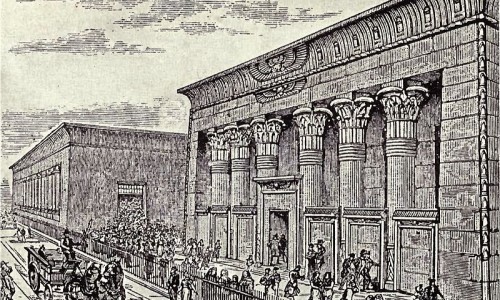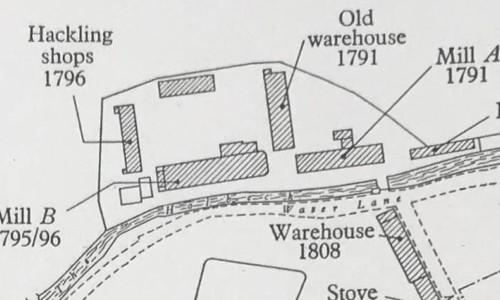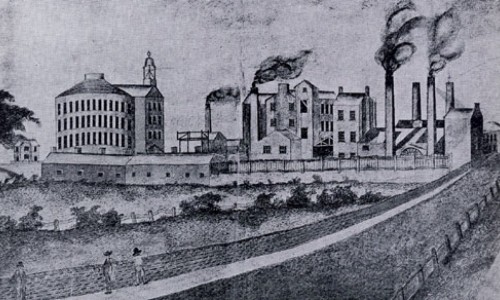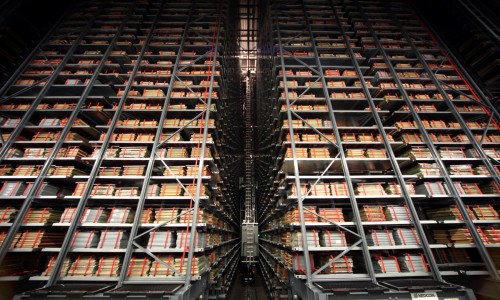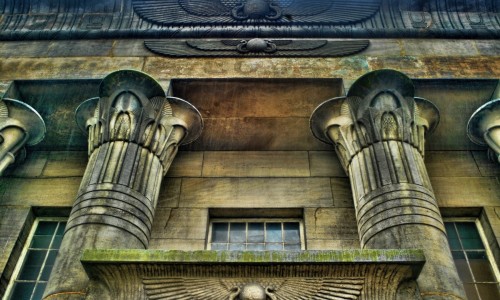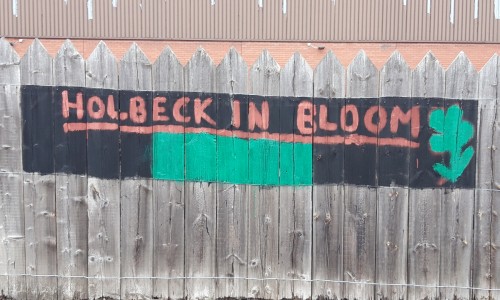Welcome To Temple – how Globe Point stands as a gateway to ambition
January 09, 2023

The opening of the Globe Point development between Water Lane and Globe Road signaled the first completed development in Leeds in 2022. It is one of a number of developments underway in the Temple district and is putting the south side of Leeds city centre firmly on the map. As a feature building, it is a landmark worthy of heralding a development with this degree of foresight and aspiration. Globe Point is such a building; a raw and angular attraction that arrests the eye and draws you in.
Globe Point rises to seven storeys and offers 40,430 sq ft of BREEAM: ‘Excellent’-rated available space; the beginning of an assertive drive in office space creation and the most substantial physical evidence yet of a vision long in the making. It is not hard to appreciate the significance of this development to the city, coupled as it is with the potential of the wonderful things which could be offered through CEG’s wider Temple masterplan, which is strategically taking shape around us.
A launch event on September 28th 2022 heralded the opening of Globe Point and digital media company Jaywing were the first occupants, taking over the third floor for their new Leeds base in mid-October. Meanwhile, the ground floor ‘welcome’ space is open to the public now as a café and business lounge run by Butlers from Kirkstall Forge. A huge video screen and vivid bespoke artwork from local artist Melody Sutherland presents a striking greeting and perfectly encapsulates the energy and vibrancy that Globe Point has always promised, and has delivered with exceptional style.

Demanding commission for a showpiece building
And with Globe Point representing the gateway to this promised land of creativity and spirit in Temple, an innovative building design was something of a concrete assumption, particularly when looking at the jagged and disobedient confines of the plot itself. Everything pointed to a ‘flatiron’ design; a natural, palpable and solitary conclusion for architects Feilden Clegg Bradley Studios, given the need to utilise the abstract shape of the site to its fullest. The resulting design is faithful to the demanding commission laid down by CEG for a showpiece building.
Walking around the internal mechanism of Globe Point is far from the kind of mundane trawl you might undertake in any other contemporary office space. Globe Point is an attack on the senses. Quite apart from the facilities, the luxurious but sustainable fit-out and the inescapable flood of natural light which energises your soul as you walk around every corner, there is an unrivalled 360° view of the Leeds skyline. This brings into focus the innovative style in which buildings and structures of historical importance in Leeds are being faithfully wedded to fast-paced change and a bright and intoxicating future.
You can see the active and industrious sprawl of south west Leeds; beyond Temple Works, beyond Elland Road football ground and right up to the green and distant hills which separate Leeds from Huddersfield. Much closer than that is an unrivalled view of William Bakewell’s ornate red brick structure at Tower Works, based on Giotto's Campanile in Florence, and which appears as if from nowhere like a serendipitous surprise. The Grade ll*-listed tower is enveloped by the scaffold and scurry of ongoing development, and yet it effortlessly fits in, giving the new Temple district the blessing of its abundant industrial past.

The Temple district is a hive of activity
Elsewhere in Temple, CEG is in a rich vein of activity and evolution. Drapers Yard, the former ‘1953 Building’ once used by Kay’s Catalogue company, but derelict for many years, has been transformed by the team and has now been handed over to Labcorp for fit-out. It is anticipated that the global diagnostics and drug development company will be opening its new UK Centre of Excellence adjacent to Temple Works in early 2023. Theatre company Slung Low is an important cultural facilitator in the Holbeck area with several different strands to its local and much wider influence. This expanded even further with its occupation of CEG’s ‘131 Water Lane’ building on the corner of Bath Road and Water Lane from October. From this prime former-industrial plot, Slung Low plans to be able to offer more outdoor performing space as well asoffice and making space for young, emerging and national artists and companies.
‘Slung Low at TEMPLE’ will ensure there is creativity, energy and ideas at the heart of the area, and is just a stone’s throw from ‘Chow Down at Temple Arches’ where the incredibly popular showcase for local and independent food and drink enterprises has further cemented its roots. Chow Down has found a home in Temple and after a hugely successful summer has renewed its lease for 2023 and is currently hosting its Winter Village concept (complete with a beer hall, mulled wine and an exciting music line-up) at the Temple location which borders the Globe Point site. This proximity is perhaps the best example of how Temple’s various threads present a place to work, rest and play. And while CEG continues to bring other plots in the vicinity into the fold as part of realising the Temple masterplan, other developments alongside Globe Point, such as Mustard Wharf, Pin Yard, Ironworks and Tower Works, are all combining to provide the footfall that gives the area and the myriad of small and long-established hospitality businesses within it, the prospect of a healthy and prosperous future.

Leeds 2 New York City 1
As a ‘flatiron’ conception Globe Point is clearly not the first example in the world, and indeed is not even the first in Leeds. While Globe Point is a devoted homage to the world famous Flatiron Building which towers over Manhattan’s Fifth Avenue in New York, it also stands as a tribute to Leeds’s first and original flatiron building.
If you are bemused by the notion of Leeds having its own flatiron building, then take a walk down Leeds Bridge towards the magnificent Adelphi pub. A casual wander southwards brings Leeds Bridge House unmistakably and unavoidably in to view; a blunt but beguiling object taking centre stage, standing as it does between a fork in the road which takes you either left towards the Tetley or out of town towards the spaghetti junctions of the M621.
At just five storeys high, Leeds Bridge House remains a go-to curiosity on any tour of Leeds’s architectural gems, and like its brand new reinvention at Globe Point, its design was not so much the fruits of a playful architect trying to rein-in their over-imagination, but was the obvious solution to the idiosyncratic confines of the site.
John James Cousins was a banker working on Park Row in Leeds city centre when he acquired the land on October 6th 1879, paying £1338 at a property auction. The site had previously occupied a theatre which had burnt down and been demolished, and hence presented a blank canvas in terms of design, but the plot bordering Hunslet Road, Meadow Lane and Waterloo Street invited a triangular-shaped construction to fit the peculiar footprint.
Cousins hired Messrs Adams & Kelly as architects, also resident on Park Row, and the building was designed, completed and opened by 1881, a full 20 years before Daniel Burnham’s 22-storey supposed ‘design classic’ was constructed in New York. But the Leeds building was similar in many ways to what became dubbed as ‘Burnham’s folly’, right down to the terracotta brick and Italian “Beaux arts” renaissance styling. It is perhaps far-fetched to suggest a relatively modest construction in industrial south Leeds would fall under the radar of a Chicago designer charged with building one of New York’s early skyscrapers, but rumours persist that the Leeds building provided some inspiration of sorts, even though, in Leeds itself, it blended nicely into the surroundings of many other Victoria buildings nearby. With an entrance flanked by fluted pilasters and Corinthian capitals, and with arched windows and ornate parapets ‘Temperance House’ as it was first known, looked far more at home in Leeds then, than it does now.

Leeds has a creative buzz to rival anywhere in the world
When it opened in 1881 the completed building was described as “a noteworthy and handsome addition to our public buildings, and very creditable to the architects” and you could apply the same description to Globe Point in 2023. Today, the Grade ll-listed Leeds Bridge House, as it was eventually re-named, still triggers an involuntary double-take for those with an eye for detail, and who can see behind the veil of the modern commercial behemoth that Leeds has become and identify an ornament of rare beauty.
Less than a mile away at the junction of Water Lane and Globe Road is the site where John Marshall started the industrial revolution in Leeds in 1791. It is a well-trodden path, not least by Marshall himself, who bought a family home on Meadow Lane in 1796, just yards from where Leeds Bridge House now stands. It was here he presided over the building of his fortune and walked the short distance to his blossoming flax mill empire every day, to keep a watchful eye over every painstaking detail. His endeavours, along with Matthew Murray and the various other mill owners they each inspired, meant the development of Leeds as a major commercial centre carried on apace, and continued to where we find ourselves today.
Leeds might lag behind New York as a global tourist attraction but with another flatiron building now embellishing the skyline on the city’s south bank, and Leeds 2023 on the horizon to supplement an already-flourishing cultural tapestry, there is a creative buzz in Leeds that arguably rivals anywhere in the world. Perhaps Globe Point as a 21st century version of Leeds’s first flatiron building is the perfect emblem of that innovative and resourceful prosperity, and if we can’t quite call it unique, we can certainly say it reflects the singular and distinctive angle that Leeds always looks for in its additions to the local geography. And it certainly represents the formidable pathway for ambition that Temple seeks to create.

.jpg&w=500&h=300)
